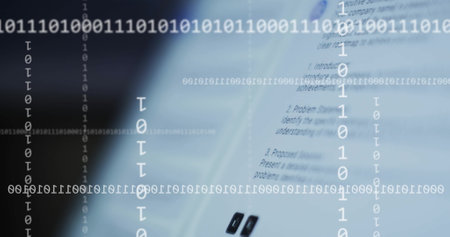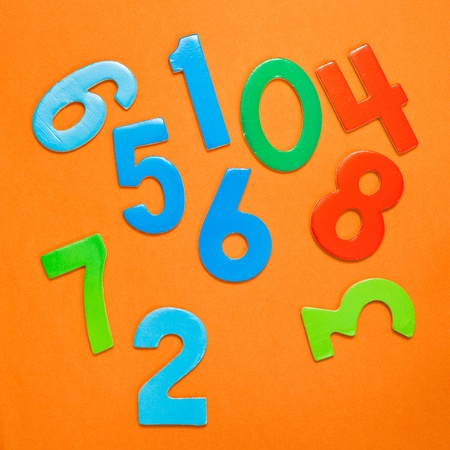Introduction to Finger Shape Analysis
Finger shape analysis is an intriguing practice that explores the connection between the length and form of our fingers and our natural talents or personality traits. While this method has ancient roots in cultures around the world, its rise in popularity within the United States can be linked to the growing interest in self-discovery, psychology, and even career guidance.
The Origins of Finger Shape Analysis
Historically, finger analysis traces back to palmistry, which originated in India and spread through China, Egypt, Greece, and eventually to the Western world. In the U.S., finger shape analysis started gaining traction in the early 20th century as Americans became fascinated by personal development and psychological profiling. Today, it blends scientific curiosity with a touch of folk wisdom.
Cultural Context in the United States
In America, finger shape analysis is often seen at wellness fairs, personality workshops, and even some corporate training events. People are curious about what their hands might reveal about their natural aptitudes or social tendencies. Unlike traditional fortune telling, American interpretations emphasize self-awareness and practical talent discovery rather than predictions about destiny.
Common Beliefs About Finger Types and Talents
| Finger Shape | Description | Associated Talents/Traits |
|---|---|---|
| Long Fingers | Slender and elongated compared to palm size | Detail-oriented, analytical, patient |
| Short Fingers | Shorter in proportion to palm size | Action-driven, practical, quick decision-makers |
| Straight Fingers | Straight alignment without curves or bends | Logical thinking, straightforward communication |
| Bent or Curved Fingers | Noticeable curve or leaning to one side | Creative mindset, adaptability, flexible thinking |
Why Americans Explore Finger Analysis Today
The modern American approach leans toward using finger analysis for self-improvement rather than mystical predictions. Whether its choosing a career path or better understanding social strengths, people enjoy exploring what their hands might say about their unique set of abilities. This blend of old wisdom and contemporary self-help creates a fun yet insightful way to look at ourselves—right at our fingertips.
2. The Science and Folklore of Finger Lengths
When it comes to finger shape analysis, Americans often find themselves caught between science and folklore. Both perspectives offer interesting insights into what your fingers might reveal about your personality, talents, and even life choices. Let’s break down both the scientific research and popular beliefs around finger proportions.
The Scientific Perspective: What Studies Say
Modern science takes a close look at the ratio between the index finger (2D) and ring finger (4D)—a measurement called the 2D:4D ratio. This ratio has been the subject of numerous studies in psychology and biology.
| Finger Ratio | Associated Traits | Key Research Findings |
|---|---|---|
| Lower 2D:4D (Ring finger longer than index) | Aggression, athletic ability, risk-taking, spatial skills | Some studies suggest a link to higher prenatal testosterone exposure; common in athletes and those with assertive personalities. |
| Higher 2D:4D (Index finger equal or longer than ring) | Empathy, verbal skills, caution, social awareness | Linked with higher prenatal estrogen exposure; seen more in people with strengths in communication and cooperation. |
It’s important to note that while these findings are intriguing, most researchers agree that finger ratios are just one small piece of the complex puzzle that makes up human personality and talent.
Folklore & Popular Beliefs in American Culture
Finger shape analysis is deeply rooted in folklore as well. Many Americans have heard sayings or old wives’ tales about what their hands reveal:
- The “Artist’s Hand”: Long, slender fingers are thought to indicate creativity and sensitivity.
- The “Worker’s Hand”: Shorter, sturdier fingers are often associated with practicality and mechanical skills.
- Palmistry Influences: Some people believe the shape of your hand—square palms for logical thinkers, long palms for dreamers—can predict career success or personal happiness.
Comparing Science vs. Folklore
| Scientific Studies | Folklore/Popular Beliefs | |
|---|---|---|
| Main Focus | Biological markers, hormone exposure in utero | Cultural associations, handed-down wisdom |
| Typical Questions Asked | “Does finger length predict behavior or ability?” | “What does my hand say about my future?” |
| Cultural Acceptance in the U.S. | Common in sports psychology, biological research | Heard in family gatherings, lifestyle magazines, palm readings at fairs |
A Balanced Viewpoint
If you’re reading your own fingers right now, remember that both science and tradition offer fun ways to reflect on your strengths. While there isn’t a magic formula hidden in your hands, finger shape analysis remains a popular topic in American culture—blending curiosity, self-discovery, and a bit of myth-making along the way.

3. Types of Finger Shapes and What They Reveal
Finger shape analysis offers a fun and insightful way to reflect on your natural talents and potential career paths. In the American context, where individuality and self-discovery are valued, understanding what your finger shapes might say about you can be both engaging and empowering. Below, we break down the most common finger shapes—long, short, tapered, and square—and interpret what each could mean for your abilities and professional inclinations.
Common Finger Shapes Explained
| Finger Shape | Description | Associated Talents | Possible Career Inclinations |
|---|---|---|---|
| Long Fingers | Narrow, noticeably longer than palm width; usually slender | Attention to detail, analytical thinking, patience | Researcher, writer, analyst, musician |
| Short Fingers | Proportionally shorter compared to palm; often broad-tipped | Quick decision-making, adaptability, practicality | Entrepreneur, sales, emergency responder, athlete |
| Tapered Fingers | Narrow towards the tip; elegant, sometimes artistic appearance | Creativity, intuition, diplomacy | Designer, counselor, artist, negotiator |
| Square Fingers | Straight sides with a flat or boxy tip; sturdy look | Organization, reliability, methodical approach | Engineer, manager, accountant, project leader |
How to Spot Your Finger Shape
If you’re curious about your own fingers, simply spread your hand flat on a table and observe the length and contour of each finger. Are they long and slim or short and broad? Do the tips look more pointed or squared off? This quick at-home check can give you an idea of where your strengths may lie.
Blending Finger Shapes: Unique Combinations
Many people have a mix of finger shapes—for instance, long fingers with square tips or short fingers that taper. In these cases, your talents may also be blended. For example:
- Long & Square: Analytical yet practical—ideal for technical roles that require precision.
- Short & Tapered: Quick-thinking with creative flair—great for fast-paced creative industries.
- Tapered & Square: Artistic but organized—helpful in project management for creative fields.
A Fun Reflection Tool—Not a Rulebook!
Remember: while finger shape analysis is a fascinating way to explore your potential talents and career directions, it’s just one piece of the puzzle. Combining this insight with self-awareness and experience will give you the best sense of where your true strengths lie.
4. Finger Ratios and American Personality Archetypes
When it comes to finger shape analysis, one of the most talked-about measurements is the 2D:4D ratio—that is, the length of your index finger (2D) compared to your ring finger (4D). Researchers have found that this simple ratio can hint at certain personality traits and even connect to specific American personality archetypes like innovators, leaders, or caregivers.
What Is the 2D:4D Ratio?
The 2D:4D ratio is calculated by dividing the length of your index finger by the length of your ring finger. Generally, you measure from the crease where your finger meets your palm up to the tip. This ratio has been linked in studies to prenatal hormone exposure, which can influence both behavior and abilities later in life.
Common 2D:4D Ratio Patterns
| 2D:4D Ratio | Description | Possible Traits | American Archetype |
|---|---|---|---|
| Lower (Index < Ring) | Ring finger longer than index | Competitive, assertive, risk-taker | Innovators & Leaders (think Silicon Valley founders, entrepreneurs) |
| Higher (Index >= Ring) | Index finger equal or longer than ring | Caring, cooperative, nurturing | Caregivers (like teachers, nurses, community organizers) |
| Average (Index ≈ Ring) | Fingers are about the same length | Balanced mix of traits | Everyday Americans who blend qualities of multiple archetypes |
Connecting Finger Ratios to U.S. Archetypes
Innovators: Many American tech pioneers and creative thinkers are known for being bold and competitive—traits often associated with a lower 2D:4D ratio. If your ring finger is noticeably longer than your index finger, you might be naturally drawn to roles that require quick thinking and a willingness to take risks.
Leaders: A similar lower ratio is also common among strong leaders—people who take charge in business, politics, or sports. They’re decisive and not afraid to stand out from the crowd, echoing the classic American “go-getter” attitude.
Caregivers: On the other hand, if your index finger is as long as or longer than your ring finger (a higher 2D:4D ratio), you might identify more with America’s compassionate side—supporting others through teaching, healthcare, or volunteer work. These folks tend to be empathetic and great team players.
A Fun Self-Check Example:
If you line up your right hand and notice your ring finger extends past your index finger, ask yourself: Do you enjoy competition? Are you quick to jump into new challenges? Or maybe your fingers are nearly even—does that match a balanced approach to work and relationships?
5. Finger Shape Analysis in the Modern Workplace
Finger shape analysis isn’t just a fun party trick—it can actually be a valuable tool in the American workplace. By understanding different finger traits, employees and managers can better match tasks to strengths, improve communication, and build stronger teams. Let’s explore how finger length and form relate to talents, and how these insights can be used for career guidance and teamwork strategies in typical US work environments.
Understanding Finger Traits for Career Guidance
Research and traditional interpretations suggest that the length and shape of your fingers may reflect certain personality tendencies and natural abilities. Here’s a simple breakdown:
| Finger Trait | Associated Strengths | Best-Fit Roles |
|---|---|---|
| Long Index Finger | Leadership, decision-making, confidence | Managers, Team Leads, Project Coordinators |
| Long Ring Finger | Creativity, risk-taking, analytical skills | Designers, Marketers, Analysts |
| Straight Fingers | Reliability, organization, attention to detail | Accountants, Administrators, Engineers |
| Bent or Crooked Fingers | Adaptability, empathy, problem-solving | Counselors, HR Professionals, Customer Service |
| Tapered Fingers (narrow at tip) | Sensitivity, intuition, diplomacy | Mediators, Negotiators, PR Specialists |
Applying Finger Shape Analysis in Teamwork Strategies
The modern US workplace values diversity—both in background and working styles. Knowing about finger shapes can help teams assign roles that fit each member’s natural tendencies. For example:
- If your team needs a strong leader: Look for someone with a prominent index finger—they may naturally take initiative.
- If you’re brainstorming creative solutions: Involve colleagues with long ring fingers—they may excel at thinking outside the box.
- If details matter most: Assign tasks to those with straight fingers—they are likely reliable and methodical.
- If customer satisfaction is key: Engage team members with bent or tapered fingers—they tend to be empathetic and diplomatic.
Building a Balanced Team Using Finger Traits
A balanced team benefits from diverse talents. Here’s a sample guide to assembling such a group:
| Role Needed | Ideal Finger Trait Match |
|---|---|
| Team Leader/Project Manager | Long Index Finger (confidence & leadership) |
| Creative Contributor/Innovator | Long Ring Finger (creativity & risk-taking) |
| Detail-Oriented Checker | Straight Fingers (organization & reliability) |
| Mediator/Support Role | Tapered or Bent Fingers (empathy & adaptability) |
This practical approach helps everyone play to their strengths while also making work more enjoyable and effective. In summary, using finger shape analysis can open up new ways for American workplaces to harness natural talent—and foster stronger teams.
6. Debates, Myths, and Responsible Use
Addressing Skepticism in American Culture
Finger shape analysis often sparks lively debates, especially in the U.S., where scientific evidence and personal freedom are highly valued. Many Americans ask: “Is there real proof that finger length can reveal talent or personality?” While some studies show correlations between finger ratios and certain traits, these findings are far from conclusive. Most mainstream scientists agree that finger analysis should not replace objective assessments or professional advice.
Common Myths About Finger Shape Analysis
| Myth | Reality Check |
|---|---|
| If you have long fingers, you’re destined to be creative. | While some patterns exist, creativity is influenced by many factors beyond finger shape. |
| Certain finger shapes predict financial success. | No scientific study proves that your hand can forecast your income or career path. |
| Finger analysis works the same for everyone, everywhere. | Cultural background and individual differences play a big role in interpreting results. |
Ethical Considerations When Using Finger Shape Analysis
- Avoid Stereotyping: It’s important not to judge people solely based on their hand features. Finger shape does not define someone’s full potential or character.
- Respect Privacy: If you analyze someone else’s hands, always ask for permission first. Respect their comfort level with this kind of personal observation.
- Don’t Replace Professional Guidance: Use finger analysis as a fun self-discovery tool—not as a substitute for medical, psychological, or career counseling.
How to Use Finger Shape Analysis Constructively
- Self-Reflection: Treat the insights as conversation starters about your strengths and interests—not as absolute truths.
- Team Building: In group settings, use it to encourage open discussion about diverse talents instead of labeling or excluding people.
- Personal Growth: Let finger analysis inspire curiosity about yourself and others, but keep an open mind about what really shapes talent and personality.
The Bottom Line on Finger Shape Analysis in America
Finger shape analysis can be an engaging way to explore personal tendencies if approached thoughtfully. Always balance curiosity with critical thinking and respect for individuality. This ensures the tool remains positive, inclusive, and empowering for everyone involved.


